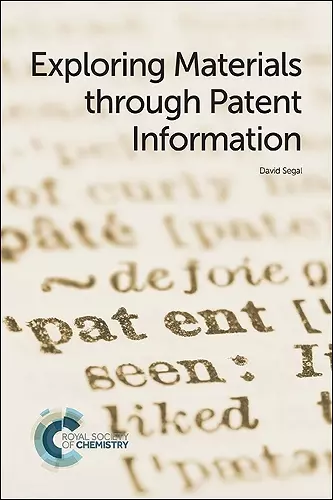Exploring Materials through Patent Information
Format:Paperback
Publisher:Royal Society of Chemistry
Published:24th Oct '14
Currently unavailable, and unfortunately no date known when it will be back

Many advances in technology are due to the development of new materials and by using patent literature we can monitor how technology has advanced. Exploring Materials through Patent Information describes how different technologies have evolved through the development of their patents, providing students with a guide on how to use patents as a source of information in their research and studies.
The first chapter provides practical advice on searching for patents and using patents, followed by individual chapters covering different material systems where the technical information in the patent literature demonstrates the developments in the technology. The materials discussed includes light-emitting diodes, quantum dots, organic light-emitting diodes (OLEDs), liquid crystals and liquid crystal displays, 3D printing, healthcare, block copolymers, aerogels, ionic liquids, flame retardants, graphene, hydrogels, and superhydrophobic materials.
The book is aimed at students in chemistry, materials science and engineering to show how patent information is an important source of information alongside other sources of information.
"...patents remain one of the best sources of detailed technical information, particularly where the invention may have commercial significance, and it is good to see this reviewed in a book."
"It successfully gives a broad overview of the historical development of each topic..."
* Johnson Matthey Technol. Rev., 2015, 59, (3), 218–220 *This book certainly fi lls a gap in the literature about how patents play a crucial role in a material’s history and development, and would be useful to anyone researching or seeking to fi le a patent in the topical areas covered in the book. It would also be invaluable to any materials scientist who is interested in patent law or students interested in becoming patent lawyers, because it shows, to some degree, how materials development goes hand in hand with patents. The introduction is also valuable to the general reader because it describes the patent process and how to search the patent literature. The book could be used as a patent history for the specifi c materials covered, but not as a blueprint for how one would fi n d or develop a patent history for other materials.
* Features BooISBN: 9781782621126
Dimensions: 228mm x 152mm x 15mm
Weight: 410g
266 pages